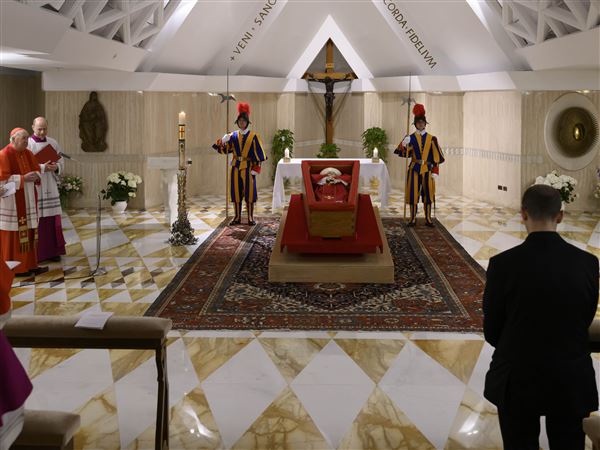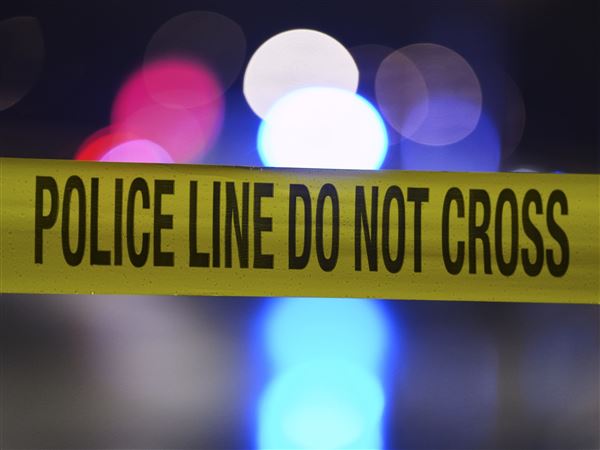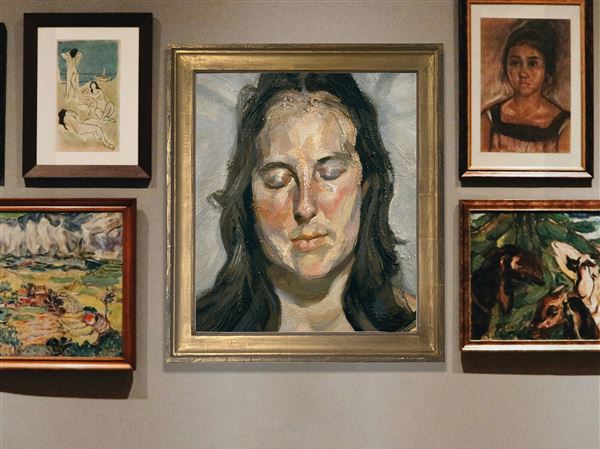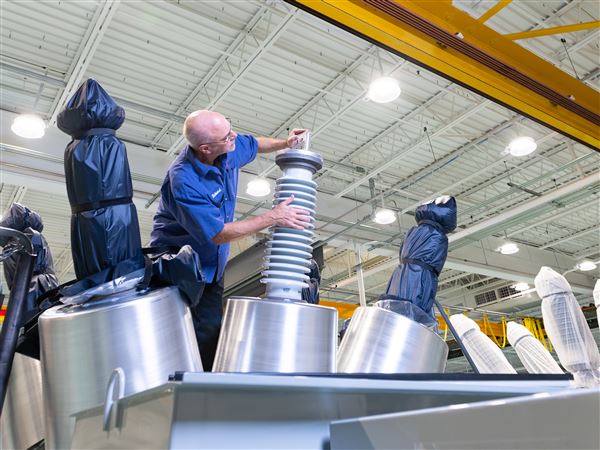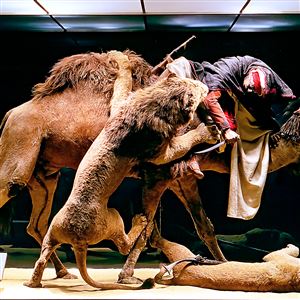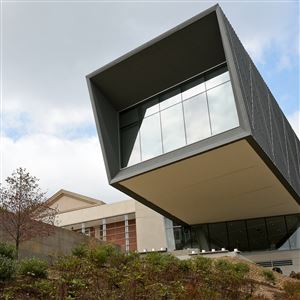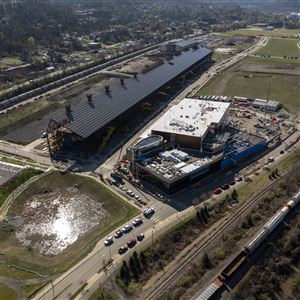The new Westmoreland Museum of American Art, which debuts next weekend, stands out in an expanding Greensburg cultural landscape.
Curiosity has been growing among art lovers and residents over two years as they watched the museum parking lot disappear and its Georgian facade morph and open up like a butterfly emerging from a chrysalis.
Revelers will be able to explore the reconfigured exterior and interior during a Saturday evening dance party and free Sunday Community Day. But the museum hopes that’s just the beginning of a long-term relationship.
When: Reopening weekend events: Sat. 7:30-11 p.m., The Sky’s the Limit Dance Party, $75, members $60. With Tracksploitation, DJ Gordy, performances by Beauty Slap, Attack Theatre, The Stefan T. Zubal Project and hula hooper Amanda Faye Peck; food stations and cash bar. (Saturday VIP pre- and cocktail parties sold out.) Next Sun. 11 a.m.-3 p.m., Community Day, free. With marching band Colonel Eagleburgers Highstepping Goodtime Band and theatrical troupe Stage Right! Pittsburgh artists and puppeteers Tom Sarver & Mike Curraro perform and conduct workshops: Build a puppet and participate in a puppet pageant around the museum grounds. Children and their families can step out with DJ KellyMom of Kid City Rockers.
Exhibitions: Inaugural exhibitions include the re-installation of the permanent collection; “All About Color and Geometry: Selections From the Diana and Peter Jannetta Gift of Art,” through April 17; “A Passion for Collecting: Selections From the Richard M. Scaife Bequest,” through Feb. 14; and “Making the Westmoreland Museum of American Art,” architectural drawings, models, photographs and renderings both realized and proposed from the original building until today, through April 17.
Hours: (beginning Oct. 25) 11 a.m.-5 p.m. Tuesdays through Sundays and until 7 p.m. Wednesdays.
Admission: Suggested donation $15 adults; $10 seniors; free for children age 18 and under, students and military (active duty & reserve) and their families.
Parking: Free.
Information: www.thewestmoreland.org or 724-837-1500.
When Judith Hansen O’Toole succeeded Paul A. Chew as director of the Westmoreland Museum of Artcq in 1993, one way of thinking about art museums was “more as a sacred temple,” she said. Directors catered to the moneyed class, which could help to build collections. She had a different vision, to open the museum to the community.
Her belief was “that the art inside was for the public, that it was a public trust, not a private one,” she said. “It was such a radical change,” and she credits the museum for taking a chance on a 39-year-old woman as its second director.
“[Museums] talk about threshold fear. People think ‘I don’t belong. I don’t have enough knowledge. I don’t have enough money.’ My goal has been to eradicate threshold fear,” said Ms. O’Toole.
One way to do that was to make the building less mysterious and the threshold more approachable, a goal understood and supported by the firm Ennead Architects of New York and landscape architects LaQuatra Bonci of Pittsburgh.
Walls were opened up and vistas expanded. Elevations on the museum’s west side were leveled, making the building visible from Main Street instead of cloistered behind shrubbery. An added east wing is cantilevered to provide additional room without isolating Maple Avenue neighbors. A Civil War statue by the museum was relocated onto the grounds of the Westmoreland County Courthouse.
“Windframe,” a kinetic sculpture by Tim Prentice designed for and recently installed on the south facade, comprises rows of shifting shimmering stainless-steel plates that catch the eyes of passers-by.
“It’s different all the time,” Ms. O’Toole said. “When the wind’s ripping, the motion’s just like a racetrack. At other times the plates just flicker.
“The glass and gardens make the museum look open, not like a temple or a government building. ... Through all the glass [windows and walls], you can see art, can see people moving around, can see people interacting.”
Ultimately, Ms. O’Toole wants people to realize that art can make a difference in their lives. The ultimate draw is this:
“We offer authenticity in a world where there’s very little authenticity. With social media, for example, images move quickly. Here you can stand in front of and have a conversation with an object made 200 years ago. And it was made with human hands.”
The Center for Creative Connections, a new 1,500-foot dedicated interactive space, will house “tactile things you touch and move around ... [that] all relate to objects in the museum.”
Under Ms. O’Toole’s administration the word “American” was added to the museum’s name, but she credits her predecessor with being the first to determine that the collection should be focused on American art.
In 1957, when the museum opened, people weren’t buying American art, Ms. O’Toole said. Mr. Chew began purchasing works by Scalp Level School artists, who painted plein air near Johnstown in the 19th century.
“He also dipped a big toe into the water buying works by [Aaron] Gorson and others who painted industrial scenes,” she said.
“In the 1980s and ’90s, American art started coming into its own,” she said.
Early on, the museum’s stated collection policy was for artworks that spanned the years 1750 to 1950. “Paul sometimes went beyond 1950, but those purchases were works on paper.”
People thought, “If I go to The Westmoreland I’m going to recognize what I see — sheep in meadows or other landscapes.”
Those visual and period parameters were radically changed when Peter and Diana Jannetta approached the museum a few years ago to offer their collection of modern and contemporary American art. The first gift, of 130 promised objects, was a sculpture by minimalist Donald Judd. Other artists represented include James Turrell, Barry LeVa, Ellsworth Kelly, Sol LeWitt, glass artist Dale Chihuly, ceramist Warren MacKenzie and photographer Alfred Stieglitz — a roster that brings a different mindset to the museum experience, Ms. O’Toole noted.
Other major recent gifts include the Richard M. Scaife bequest, which fills in collection gaps including Hudson River School paintings, and an extensive collection of figurative American sculpture gifted by Dr. Michael Nieland.
With the Jannetta gift, “the collection goes beyond 1950 and in particular [is complemented by] what they most love, which is minimalism and abstraction. Theirs was the original transformative gift,” she said.
“To the public eye, we’re a niche museum of historical art. But we’re not a niche museum anymore. We now have the full gamut of American painting. We can tell the whole story of American art from its very early roots to presumably yesterday.
“That puts us in a ranking that we were never in before.”
M. Thomas: mthomas@post-gazette.com or 412-263-1925.
First Published: October 18, 2015, 4:00 a.m.
